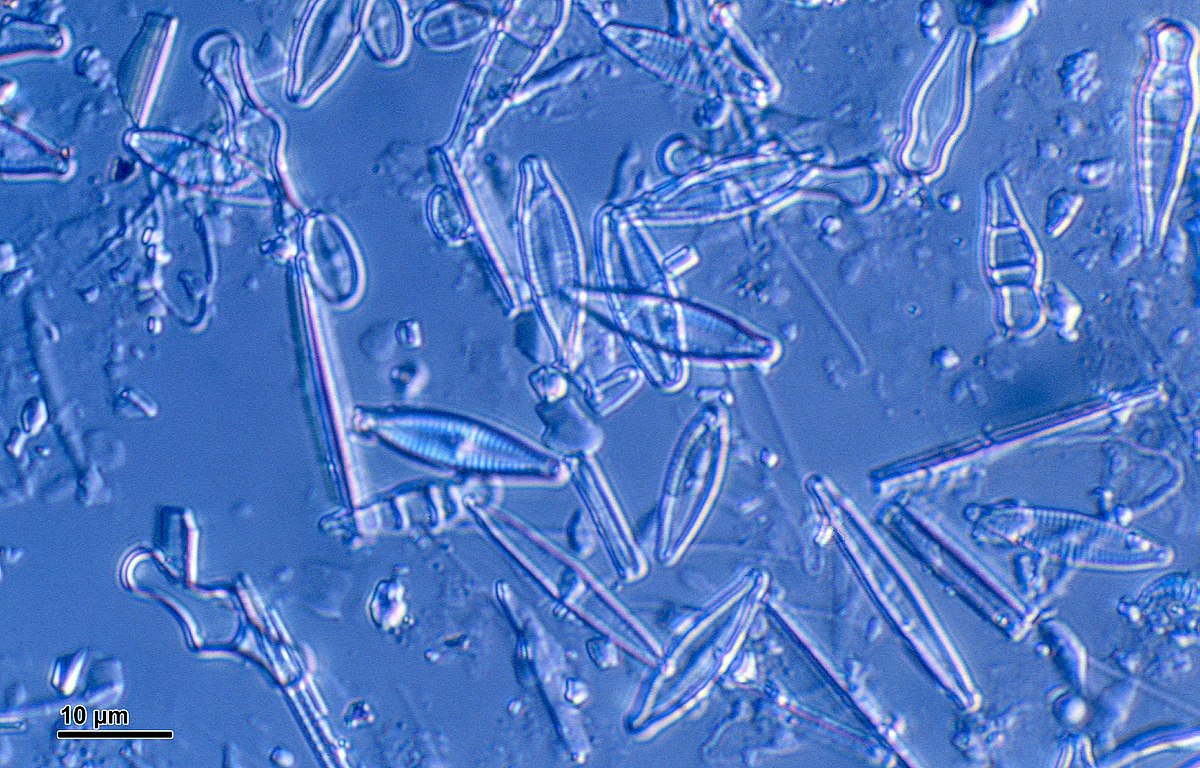Table of Contents
![]()
Introduction
Microscopic algae, often overlooked but of immense ecological significance, encompass a wide array of organisms. In this article, we’ll delve into the captivating world of microscopic algae, exploring their diversity and the pivotal roles they play in our ecosystems.
Taxonomy and Classification of Microscopic Algae
Overview of Algae Taxonomy Microscopic algae are a diverse group, classified under the umbrella term “algae.” Despite their small size, they exhibit remarkable diversity, ranging from cyanobacteria, diatoms, green algae, dinoflagellates, and more. Each group has its unique characteristics, making algae taxonomy a fascinating field.
Major Groups of Microscopic Algae:
- Cyanobacteria (Blue-Green Algae): Primarily aquatic, these photosynthetic bacteria played a significant role in Earth’s oxygenation.
- Diatoms: Known for their intricate silica shells, diatoms are vital primary producers in aquatic ecosystems.
- Green Algae: Spanning terrestrial and aquatic environments, green algae are diverse and ecologically versatile.
- Dinoflagellates: These flagellated algae can create mesmerizing bioluminescent displays and are crucial to marine food chains.
- Euglenoids: Unicellular euglenoids exhibit both plant-like and animal-like characteristics.
- Golden Algae: These algae often inhabit freshwater environments and serve as a food source for aquatic organisms.
- Brown Algae: Prominent in seaweed, brown algae are essential components of marine ecosystems.
Biodiversity of Microscopic Algae Microscopic algae can be found in a variety of habitats, including oceans, freshwater bodies, soil, and even on the surface of trees. Their adaptability allows them to thrive in diverse environmental niches, contributing to their remarkable biodiversity. Understanding this biodiversity is crucial for ecological research.
Roles of Microscopic Algae in Ecosystems
Primary Producers in Aquatic Food Chains At the foundation of aquatic food chains, microscopic algae are primary producers. They convert sunlight into organic matter, serving as a crucial food source for a multitude of organisms, from zooplankton to larger marine life.
Oxygen Production through Photosynthesis Microscopic algae are prolific oxygen producers. They are responsible for nearly half of the world’s oxygen production through photosynthesis, making them vital to the planet’s atmosphere.
Carbon Fixation and Climate Regulation Through carbon fixation, algae remove carbon dioxide from the atmosphere, mitigating the greenhouse effect and helping regulate climate patterns.
Symbiotic Relationships with Other Organisms Some algae form symbiotic relationships with corals, providing them with energy through photosynthesis. This partnership is vital for coral reef ecosystems.
Biotechnological Applications Microscopic algae hold immense potential for biotechnology, including biofuel production, pharmaceuticals, and even wastewater treatment.
Economic and Commercial Importance
Algal Biofuels and Bioproducts Algae are a promising source of sustainable biofuels and bioproducts, offering an eco-friendly alternative to fossil fuels.
Algae in Aquaculture and Fisheries They are used as a feed source in aquaculture, contributing to the growth of the global fisheries industry.
Pharmaceutical and Nutraceutical Uses Algae are rich in bioactive compounds, with applications in medicine and nutraceuticals.
Algae-based Water Treatment Algae are employed in wastewater treatment, playing a role in purifying water and removing pollutants.
Environmental Challenges and Conservation
Harmful Algal Blooms (HABs) HABs, caused by certain algae, can release toxins that harm aquatic ecosystems and pose health risks. Monitoring and prevention are critical.
Pollution and Algal Responses Algae are sensitive to pollution. Studying their responses to environmental changes can inform pollution management strategies.
Conservation Efforts and Restoration Conservation initiatives aim to protect vulnerable algal species and their habitats. Restoration projects work towards rehabilitating damaged ecosystems.
Future Prospects and Research Directions
Advances in Algal Biotechnology Continued research into algal biotechnology holds promise for sustainable energy, medicine, and environmental solutions.
Understanding Algal Diversity Exploring the vast diversity of microscopic algae can uncover new species and ecological interactions, further enriching our knowledge.
Climate Change Implications Understanding how algae respond to climate change is crucial for predicting ecosystem shifts and adapting conservation strategies.
Potential Solutions and Innovations Algae-based innovations may offer solutions to pressing global challenges, from renewable energy to pollution mitigation.
Conclusion
Microscopic algae, though often unseen by the naked eye, are indispensable to our planet’s health and well-being. Their incredible diversity and pivotal roles in ecosystems make them a subject of fascination and a source of hope for a sustainable future. Let’s appreciate and protect these tiny but mighty organisms, recognizing their vital importance in the intricate web of life on Earth.
